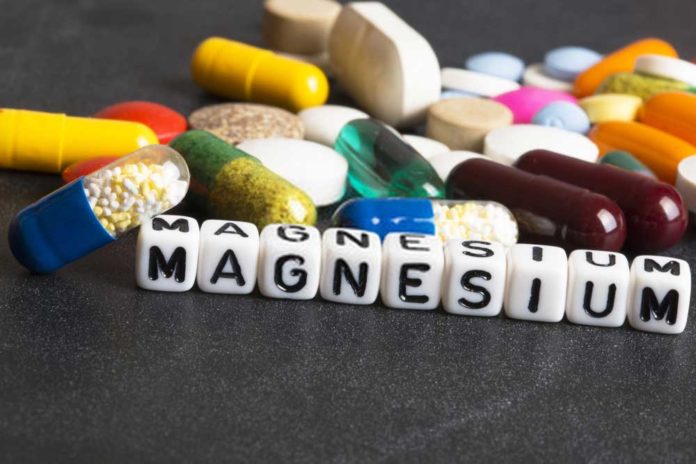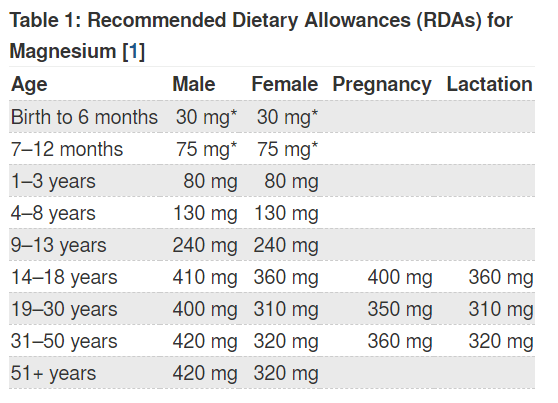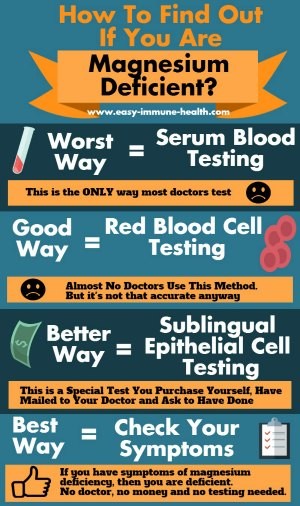For my Magnesium supplementation journey you can read Part 1 that this article builds upon: https://evancarthey.com/my-story-on-magnesium-the-supplement-you-should-be-taking/
As mentioned at the end of part 1, it took about 7-10 days from supplementing of around 400 – 500 mg of Magnesium per day for me to start feeling “normal” again.
By normal I mean that I didn’t suffer from extreme fatigue and could workout again. While I was recovering from my magnesium deficiency I would get extremely tired everyday around 5pm.
It was to the point that I would have to go lay down and sometimes I would stay in bed until the next morning because the fatigue was so high.
Even if I got back out of bed later in the evening the most I could do was sit on the couch and slowly walk around the house.
Since then I haven’t had one atrial fibrillation or vertigo attack and my energy levels have been great.
How I Take Magnesium
The National Institute of Health Magnesium recommendations vary upon your age and if you are pregnant. Here are their recommendations:
I fall into the Male category of 31-50 years so I would need around 420mg per day. This includes the Magnesium you receive from your diet and supplementation.
I know I am deficient when I start getting muscle spasms around my left eye and especially in my left tricep. When that happens I up my dosage from supplementing to around 400mg per day. This 400mg per day does not include the Magnesium I receive from my diet so I am definitely getting more than the daily recommendations.
There are two ways I can tell when I have replenished my Magnesium levels. The easiest way but most uncomfortable is when I have a day of gastric distress. That is probably too much information but it is what it is. So when that happens I know to reduce my supplementation dosage to between 100mg – 200mg per day for a couple of days.
The second way I can tell is that my spasms in my left eye and tricep are gone. Occasionally I will have spasms in my left eye and left tricep. At first I thought it was due to low Potassium which could be an issue so to be safe I take around 1,000 mg per day but even that didn’t make the spasms stop. But when I increased my Magnesium supplementation to over 400mg per day then after a day at most the constant spams disappear.
So I know now when those spasms begin to happen that I need to increase my dosage for a couple of days.
From trial and error I usually fluctuate between 200mg – 300mg per day on average. That seems to be the sweet spot for the majority of the time that doesn’t cause gastric distress but keeps the spasms away. If I start having those above mentioned spams then I’ll up my dosage to between 400-500mg per day until they are gone or I have the gastric distress.
You could try a blood test but they tend to not be too accurate because your body stores over half of its magnesium in the bones and soft tissue. So you will need to test your intracellular magnesium levels, not your serum magnesium levels.
The test you will need to take will be the magnesium RBC test which measures you magnesium that you have stored in your red blood cells. This will help paint a clearer picture of how much magnesium your body has in its bones and soft tissues.
If you do get the test then you are looking for a level above 6.0 mg/dl. If your level is less than this then you will want to supplement magnesium or eat a lot more magnesium rich foods to make sure you get it above 6.0 mg/dl.
Vitamin D and Magnesium
A vitamin that depends on stable magnesium levels is Vitamin D. I’ll have another article written about Vitamin D because it is one of the primary supplements I take for my health as well. Vitamin D and Magnesium depend upon each other to work properly throughout your body. If one is low then the other won’t work optimally which can cause further issues.
This was one of the ways I believe I became extremely deficient over time. I had been taking at least 5,000 IU of Vitamin D for years as well as being stressed out, lack of sleep, and drinking too much caffeine. Add in the day I became extremely dehydrated and I created a recipe for disaster for my body. I was a ticking time bomb from my chronic low Magnesium levels.
So if you are already supplementing with Vitamin D then please consider taking Magnesium as well. This was an error I did for years where I supplemented with Vitamin D but not Magnesium. If you are going to take one then I recommend taking the other.
I recently had blood work done (they don’t test for Magnesium) and my Vitamin D level was 43 ng/ML.
As a side note there have been doctors that recommended having a level of over 50 ng/ML for your Vitamin D will help fight off the Corona virus. Here is an article where the doctor talks about it: https://www.psychologytoday.com/us/blog/suffer-the-children/202005/vitamin-d-and-covid-19
Here is another article about Vitamin D levels and sports performance: https://www.t-nation.com/supplements/d-is-for-doping
I recently had blood work performed and my Vitamin D level was 43 ng/ML. 30 is the minimum level my cardiologist recommends but I would like to get my level above 50 ng/ML. With my increased Magnesium supplementation as well as increased Vitamin D I hope to achieve that threshold the next time I get my blood tested.
The Type of Magnesium I Use
https://www.youtube.com/watch?v=eyENTdePWWc&ab_channel=motivationaldoc
In the video above the gentleman does a good job of quickly describing a couple of different types of magnesium supplementation because there are a lot of different types being sold.
I prefer to take a chelated form of for my magnesium supplementation because they offer superior bioavailability. This in turn will provide your body with more nutrients to be absorbed properly.
For more information about chelated supplements you can read about it in this article: https://blog.davincilabs.com/blog/benefits-of-chelated-magnesium
The exact brand of I use is “Doctor’s BEST.”
Here is the image and the link to its sales page at Amazon (affiliate link):
Each pill gives you 100mg of Magnesium so it is easy for me to increase or decrease my dosage in lots of 100mg as well as being very affordable.
Sometimes I take it at night before bed and other times I take it spread out throughout the day. It just depends on if I am upping my dosage. If I am upping my dosage then I’ll spread it out throughout the day.
On a normal day I’ll take 100mg at lunch and then 200mg near bed time.
Some people recommend to take it with food while others without food. I’ve done it both ways and haven’t noticed a difference either way. Since I usually take it with other vitamins I usually take it with food.
Conclusion to the Benefits of Magnesium Supplementation
As you can tell I am a huge proponent of Magnesium supplementation. I did further research and found that kids should be taking it as well so I ordered gummies for my kids to take as well as Vitamin D.
One thing I forgot to mention is it helps with your sleep as well? It is one of the many benefits that Magnesium provides for your body.
After my scare with atrial fibrillation I will be supplementing with Magnesium for the rest of my life. Not just to avoid that again but for the health benefits Magnesium supplementation provides.
I’ve also increased foods that have high levels of Magnesium such as almonds, pumpkin seeds, and avocados. You can get enough Magnesium from your diet but to be safe I supplement with it as well.
Please remember I am not a doctor and all information here is my own opinion. Please consulate your own health care provider to determine if supplementing with Magnesium could benefit you.







